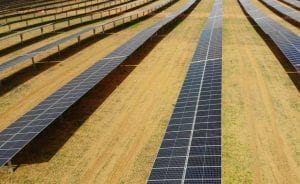
Australia’s energy debate seems to be focused about the ability of its generation fleet to meet peak demands next summer when the heat-waves are most intense. The lesson from the past summer is: Don’t count on fossil fuels keeping your air-con on when it is needed most.
It is fashionable in much of the mainstream media to blame energy shortfalls on renewable energy and wind and solar. “When the sun don’t shine and when the wind don’t blow” is a common refrain from the prime minister all the down to ABC television presenters.
But reports from the Australian Energy Regulator into many high-priced events that occurred over the last summer suggest the biggest problem facing energy markets is that the major coal and gas plants are just as likely to melt in the sun: and unlike wind and solar output, which can be reliably predicted, these events usually come as a surprise.
As Spark Infrastructure, the owner of networks in Victoria and South Australia, wrote in its submission to the Finkel Review: “It currently appears that generators are increasingly unable to deliver their full generation capacity when it is needed most.”
Take, for instance, February 6, when more than 3,000MW of capacity in NSW and Queensland suddenly became unavailable.
At the Liddell coal generator in the Hunter Valley, one 480MW unit tripped in the morning, and in the afternoon a second until lost 100MW of capacity due to a steam leak , and then another Liddell unit lost 130 MW of capacitydue to a tube leak.
Over at the Vales Point coal plant, one unit lost 160MW in capacity because the operator was worried about the rising water temperature in the adjoining Lake Macquarie, while in Queensland “vacuum” issues at Callide forced 350MW of capacity to be withdrawn, while Gladstone reduced the capacity by half for no apparent reason.
To top this off, the Colongra gas plant in NSW suddenly made its entire 640MW of capacity unavailable because of “uneconomic dispatch”. Go figure: the prices were running at $13,400/MWh at the time. One wonders at what price would burning gas become “economic” for this power station owned by Snowy Hydro.
Of course, this is not the first time this has happened. Nearly all the pricing spikes that coincided with heat waves over summer have been caused, at least in part, by the failure of fossil fuel generators in the heat.
Four days later, in NSW, came the biggest heat event, one that very nearly caused widespread blackouts. At the time, 1,000MW of capacity was lost at Liddell, and then the two biggest gas generators in the state – Tallawarra (faulty gas turbine) and Colongra (low gas pressure) – tripped, taking out another 1,200MW of supply.
The NSW government has been at pains to point out that it was the wind, solar and hydro resources that did deliver as expected and were critical in keeping the lights on.
On many occasions, the market operator has had to impose constraints on the interconnections between NSW and Queensland because of the possibility of the Kogan Creek coal generator in Queensland – the biggest and most modern unit in the country – would trip and cause massive outages. These preventative actions caused prices to soar.
Indeed, in Queensland in January, the AER noted in separate reports, prices soared because significant amounts of capacity were suddenly withdrawn, mostly the result of “heat” issues that forced coal and gas generators across the state to lower capacity, just as temperatures rose to their peak and as the 1.5GW of rooftop solar capacity began to wind back.
On Friday, January 13, for instance , between 600MW and 670MW of coal and gas capacity suddenly became “unavailable” due to “plant limitations, some of which related to the high temperature.”
In South Australia, the tripping of the Torrens Island units and Pelican Point caused 600MW to be lost on March 3, and caused the interconnector to get within 30MW of tripping itself and causing another system black. Fortunately, wind held firm and the voltage ripples took out numerous household devices that reduced demand that saved the link from overloading.
Spark, which cited both the NSW and South Australian instances urged the AER and the Finkel review panel to “take a closer look at the maintenance practices and market pricing decisions of energy generators.”
Just as well then that more renewable energy is being built, with the floodgates on new investment finally opened after years of resistance from the fossil fuel generators.
Around 1,000MW of large scale solar is planned for Queensland, with around 500MW already under constructions, and in NSW another half a dozen solar farms are being added to the grid, along with several major wind farms.
Indeed, Transgrid says that more than 6,000MW of solar enquiries have been received so far this year, and it predicts that 95 per cent of all demand will come from large scale and distributed renewables by 2050.
David Leitch has a full wrap-up of his forecasts for wind and energy in this article here, where he predicts wind and solar to provide at least 15 per cent of all demand in the National Electricity Market by the end of 2018, and a whopping 64 per cent in South Australia.








